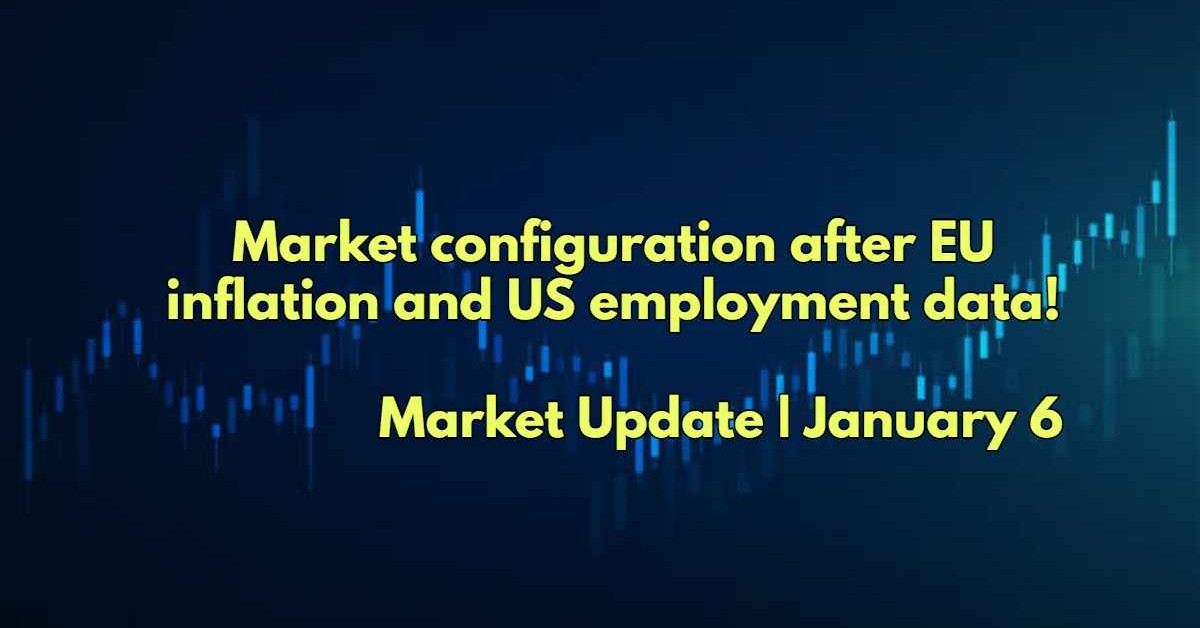EU mixed inflation and the strong labor market in the US
Today we had a jam-packed calendar. German factory orders fell by -5.3% in November, but retail sales rose by 1.1%. Eurozone, consumer price inflation, eased 0.3% in December to lower the annual CPI to 9.2, down from 10.1% seen in November, but excluding Energy and Food prices, Core CPI in December rose to 5.2%, up from 5.0% in November. With lower prices, the consumer got more interested in spending money. Therefore, we can see a 0.8% rise in EZ retail sales, compared to falling -1.5% in November. This data means that inflation is decreasing and consumer demand is increasing, but to trust the data; we need to see the same trend for at least three months; then, we can expect European Central Bank to change its policies. With these data, raising another 25 basis point interest rate seems more likely in the next ECB meeting. Stock markets can rise in the short term, but we cannot count on their bulls for long, the same as the Euro rate against its crosses.
Later in the US season, employment data and ISM PMI numbers had another surprise. Despite falling PMI, the US economy added more jobs than estimated in the last month of 2022. The ISM Non-Manufacturing PMI in December, from November 56.5, fell deeper to 49.6. The market expects to see the service PMI at 55.0. As data shows, with sharply falling economic activities, the jobless rate fell to 3.5% from a downwardly revised 3.6%. 3.5% is a record low stretching back over 50 years. In addition, the more broadly defined 'U6' unemployment rate, which gives a fuller picture of under-employment across the economy in December, eased to 6.5% of the workforce from 6.7%. With December numbers, we can conclude 2022 with almost 4.5 million created jobs. With a 6.7 million gain in 2021, the labor market not just recovered, but now it is much higher than pre-pandemic as well.
According to the labor department data, December nonfarm employment rose by 223,000 through the middle of last month, slightly less than November's 256,000 but still more than the 200,000 consensus estimates.
While at first look, data were much better than estimates and could increase the 50 bps rate hike on January 31 Fed meeting, detailed data had something else to say. November data was revised lower to 256,000 from the primed estimate of 263,000. Also, the average hours worked per week fell to 34.3 from 34.4, the lowest level that was not seen since April 2020. On top of them, December average hourly earnings slowed marginally to 0.3% from 0.4% in November and average hours worked per week also fell to 34.3 from 34.4. Same as payments, average hours worked also printed the lowest since April 2020.
With mentioned data, we can see signs of a cooling economy, meaning that a 25 bps rate hike in the next FOMC meeting has more chance than 50 bps, and this expectation will add pressure on USD and support the stock markets. However, since the reason for increasing prices is the weaker economy, it can only last for a while.
From the technical point of view, SP500 is trying to recover in an overall downtrend. The key pivot is still at 4,000, and any uptrend needs to recover above that; otherwise, the trend remains bearish.


















